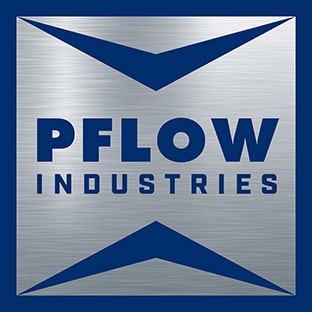The Japanese introduced the concept of “just-in-time” manufacturing. But Western industry brought the infrastructure to make it happen.
Efficiency starts as a mental process and is realized by the removal of wasteful processes or actions and the inclusion of automated systems in modern manufacturing facilities. In essence, it is finding practices and processes that do not add value.
Lean Logistics: What it Means
Lean logistics is the cornerstone of modern manufacturing thinking. It works by a self-correcting loop of feedback and implementation. Creating an efficient manufacturing process reduces costs top to bottom. The faster a product can be made while ensuring total quality, the shorter the time between expense and profit. Reducing waste also improves productivity.
A great place to start is to look for waste in your facilities’ manufacturing and warehouse space. Any time something needs to be moved from point A to point B, there is an opportunity to apply lean logistics.
Ask yourself, “are there opportunities to reduce or remove redundancies or to lessen the time raw materials and finished products are handled?
Lean Facility Layout = Increased Productivity
Getting to the optimal plant or warehouse layout is a learning process. Lean facilities minimize raw material and final product handling time while creating upstream processes that produce a seamless manufacturing flow. These layouts maximize floor space, increase productivity and quality, and, shorten lead times.
Adding automated material movement to your lean manufacturing facility plan also provides a safer and more efficient means of moving materials versus relying on staff carrying materials or moving them via forklift.
Traceability
A leading source of waste in manufacturing is losing track of materials, work-in-process and finished products. Traceability is the ability to track every aspect of manufacturing and distributing a product through its entire lifecycle. Internal traceability is a means by which to trace the movement of raw materials and finished products within any given process and it helps eliminated wasted time manually looking for materials.
When materials leave one part of the manufacturing area, they should have a direct path to the next area in the process. Moving materials and products through the production floor works best when each step is clearly documented, understood and applied. This prevents loss and ensures that quality is maintained across the line.
Package Handling Lifts
Installing package handling lifts allows safe and efficient access to second levels and eliminates the need for employees to manually carry loads to second levels or transport awkward payload via forklift.
PFlow engineers and manufactures different types of packaging handling lifts that can be used independently or as part of a high-speed, high-cycle automated system. Each of these lifts help to maximize space and increase productivity:
- Self-contained lifts provide safe transportation of goods across levels. There’s no fear of falling loads from forklifts or scissor lifts.
- Fully-automated and conveyorized systems can seamlessly integrate with other manufacturing devices. This way, they can automatically move materials to their destination without waiting for forklifts or pallet jacks.
How to Find the Right Fit
PFlow has been designing packaging handling lifts for a wide range of industries for over 40 years. Contact us today to see how a PFlow lift can improve your business’ productivity.
